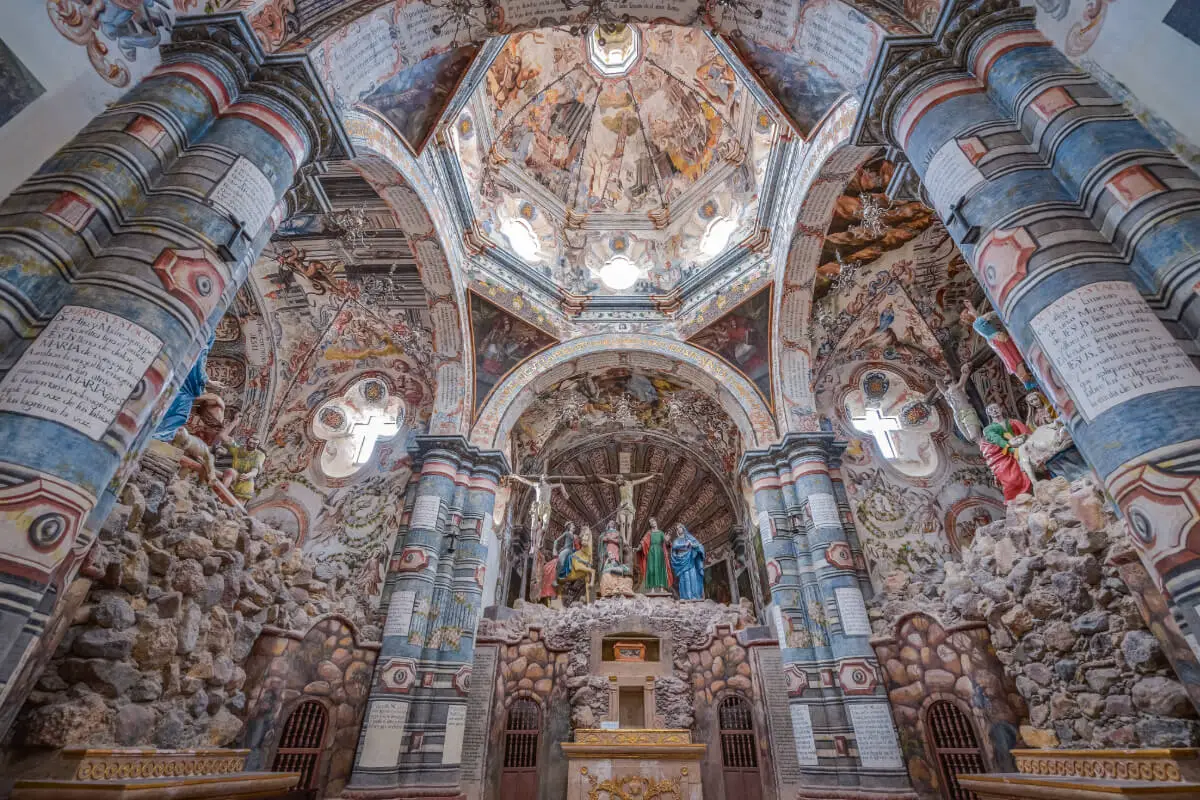The High Renaissance, a period of unprecedented flourishing in the arts, marks a zenith in European cultural history, radiating from the heart of Italy between the late fifteenth and early sixteenth centuries. It was an era marked by a profound reverence for classical antiquity, intertwined with the blossoming ideals of humanism. Artists of this time embarked on a quest for balance and beauty, fusing architecture with the natural landscape and pursuing an ideal aesthetic born from the revived principles of the Early Renaissance.
At the forefront of this thrilling epoch were visionaries who pursued perfection through brush and chisel, challenging the boundaries of creative expression and laying the cornerstone of modern art. This exploration of the High Renaissance will illuminate the characteristics, key figures, and masterpieces that define this pivotal period in art history. It will also examine the multidimensional influences and technological advances it spurred, reshaping Italy and the broader European tapestry.
Table of Contents
- Defining the High Renaissance
- Key Figures of the High Renaissance
- Iconic Works of the High Renaissance
- Technological and Cultural Contributions
- High Renaissance Beyond Italy
- Related Artwork
Defining the High Renaissance
The High Renaissance, a term that conjures images of unparalleled artistic achievement, is a period in art history that saw a harmonious and classical style flourish. It spanned from approximately 1490 to 1527, cradling the careers of legendary artists such as Leonardo da Vinci, Michelangelo, and Raphael. These masters pushed the boundaries of art, embedding profound realism and human emotion into their works, forever transforming how the world created and appreciated art.
To truly understand the dawn of the High Renaissance, one must look back at the foundations laid during the Early Renaissance. Pioneers like Masaccio, Donatello, and Botticelli sparked a rekindled interest in the natural world, the human body, and the principles of perspective, setting the stage for a new era of artistic brilliance.
The beginning of the High Renaissance is often pinpointed to Leonardo da Vinci’s arrival in Milan in the late 15th century. Leonardo’s relentless scrutiny of the physical world and human anatomy yielded a series of masterpieces that showcased not only his incredible skill as a painter but also his inventive use of composition, lighting, and subtle gradations of tone. These elements combined to create a sense of life and depth that had never been seen before.
Rome became the epicenter of this phenomenal artistic surge in the heart of Italy. Artists like Raphael answered the call for grandiose and ambitious works. His elegant compositions and refined use of color harmonies encapsulated the spirit of the High Renaissance. Raphael’s renowned frescoes in the Vatican’s Stanze di Raffaello are paragons of balance and beauty, reflecting an almost divine order that is both awe-inspiring and serene.
Yet, no discussion of the High Renaissance would be complete without mentioning Michelangelo’s colossal impact. His sculptural masterpieces, like David and his monumental Sistine Chapel ceiling, are considered the pinnacle of High Renaissance art. The powerful muscularity and dynamic movement of his figures, coupled with the transcendent quality of his architectural designs, brought forth a dramatic intensity that still captivates viewers today.
These titanic figures did not solely define this golden age of art. Artists like Titian and Correggio continued to explore color and light, and their contributions further pushed the boundaries of painting techniques and emotional expression.
The zenith of the High Renaissance is often recognized as the completion of the Sistine Chapel’s ceiling in 1512. However, the splendor of this era gradually waned with the passing of its greatest champions and the onset of the tumultuous period of the Italian Wars. These conflicts brought about an economic decline and a shifting of patronage, ultimately segued into the Mannerist style that emerged in the late 1520s.
With its emphasis on idealized beauty, complex compositions, and a refined approach to depicting the human form, the High Renaissance remains one of art history’s most celebrated and studied periods. It encapsulates the peak of humanist ideals through art, combining scientific inquiry, philosophical thought, and extraordinary creativity to leave an indelible mark on the canvas of history.
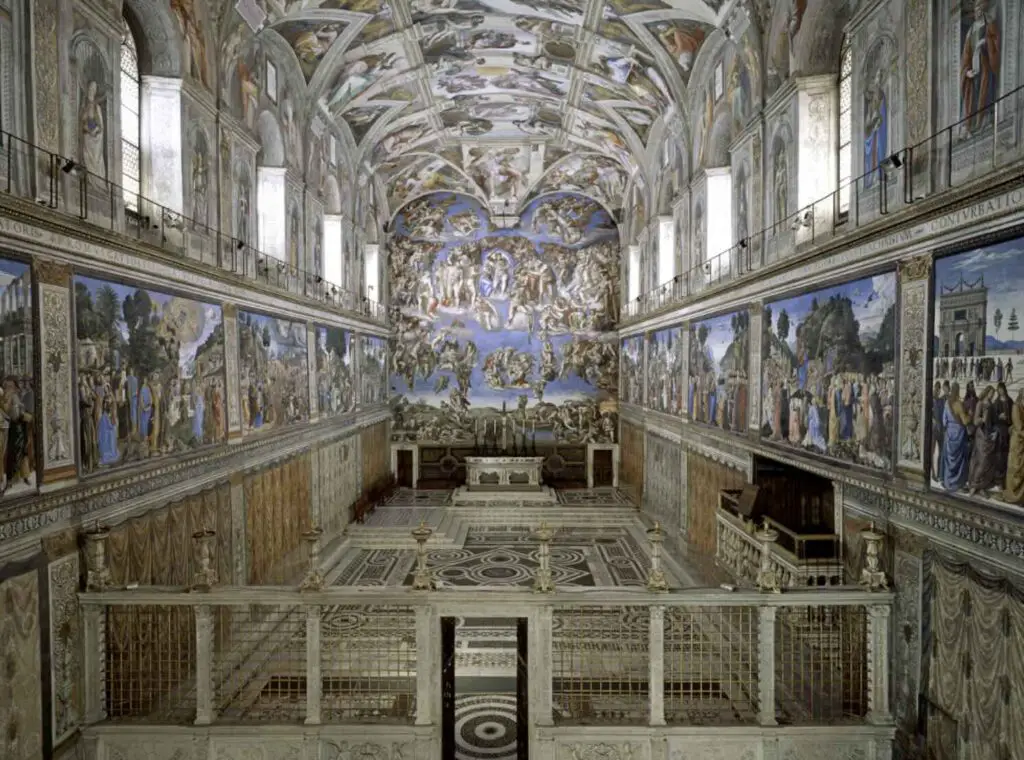
Key Figures of the High Renaissance
Delving deeper into the artistic fervor of the High Renaissance, one must highlight the immense strides taken within this epoch, which extended roughly from the late 1400s to the early 1500s. This era was a crucible of innovation, leaving an indelible mark on the cultural tapestry of the world.
Recall the almost ethereal layers of atmosphere that Giorgione, the Venetian maestro, applied to his canvases. His “La Tempesta,” with its enigmatic subject and groundbreaking landscape, breathes the quintessential air of High Renaissance sophistication, illuminating the blurring lines between humanity and nature that his contemporaries were only beginning to explore with such finesse.
Consider also Bramante’s harmonious geometry, which encapsulated the rebirth of classical forms with absolute precision. His design for St. Peter’s Basilica in Rome exemplified the pinnacle of Renaissance architectural philosophy, melding form, function, and spirituality in a grandiose yet seemingly effortless style.
Advancing the narrative fresco tradition, artists like Andrea del Sarto delivered stories with a vitality that was both accessible and sublimely learned. His works in the Florentine churches injected a dose of drama and emotive expressiveness into religious scenes, connecting the divine with the profane.
Moreover, the High Renaissance was not restricted to the masculine touch alone. Sofonisba Anguissola stands out as a spark in this illustrious list. She confidently wielded her brush to capture the subtleties of human expression in her portraits, an accomplishment all the more notable in a male-dominated sphere.
Each of these titanic artists brought forth a mastery of light, perspective, and anatomical accuracy that propelled their works into timeless relevance. They were not only painters or sculptors but multi-faceted innovators. Their legacies are etched in every art history book, celebrated in the halls of the world’s most excellent museums, and continue to inspire artists and aficionados alike.
Thus, the High Renaissance remains a lighthouse of human achievement, a reminder of what can be accomplished when talent, passion, and an unyielding pursuit of knowledge coalesce. Even without the all-encompassing luminaries like Leonardo, Michelangelo, and Raphael, the period glows intensely with many other artists who shine brightly in their domains, constantly rewiring the circuitry of art’s grand continuum.
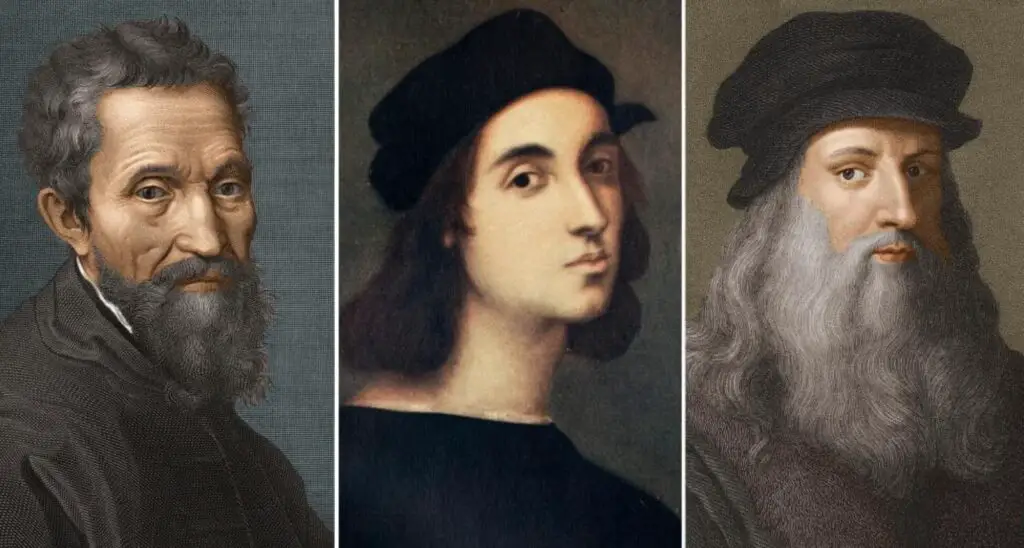
Iconic Works of the High Renaissance
The High Renaissance, a symphony of artistic mastery, continues to captivate and inspire. It is a golden epoch during which an extraordinary blend of science, philosophy, and creative genius culminated in an era of unprecedented artistic achievement.
Giorgione, not as commonly celebrated as da Vinci or Michelangelo, is a mastermind of poetic ambiance. His renderings of the natural world and human emotion coalesce in a fashion that borders on the mystical. “The Tempest,” with its stormy sky and enigmatic figures, captures the human experience with a palpable tension between tranquility and impending drama.
Contemplate the architectural wonders crafted by Bramante. This innovator revived classical forms, bringing the grandeur of ancient Rome back to life for a modern audience. The Tempietto, a masterpiece of harmonious proportions, signifies a sacred geometry anchoring the philosophies of the time in bricks and mortar.
Turning to Andrea del Sarto, his narrative frescoes relay stories with a rich sentiment that tugs at the viewer’s emotional strings. The figures in his work, such as those in the “Last Supper” in Florence, are imbued with a sensitivity that connects viewers to scenes from long ago with a vivid immediacy.
In recognition of the oft-overlooked contributions of women in the High Renaissance, Sofonisba Anguissola emerges as a beacon of female artistry. Despite societal barriers, she rose to prominence, becoming renowned for her portraits that subtly exposed her subjects’ inner selves within the stately confines of their societal roles.
The High Renaissance period exemplifies a zenith in using light, perspective, and anatomical precision. Artists became adept at manipulating these elements to breathe life into two-dimensional works. Whether the fall of light across a subject’s face or the foreshortening that conveys depth, these artists used their canvases to forge windows into realistic scenes and narratives.
Embracing these collective endeavors of High Renaissance artists, one cannot underestimate their enduring influence. Their approach to art set a standard that would echo through the ages. These titans of human expression leveraged their incredible talent to leave a legacy forever redefining creative excellence.
The High Renaissance is a beacon of human achievement and innovation. It was a time when art did not just mirror life; it elevated it, crafting a legacy that speaks of the indelible power of human creativity. As history progresses, the torch lit by the hands of these masters continues to burn brightly, illuminating the path for future generations of artistic explorers.
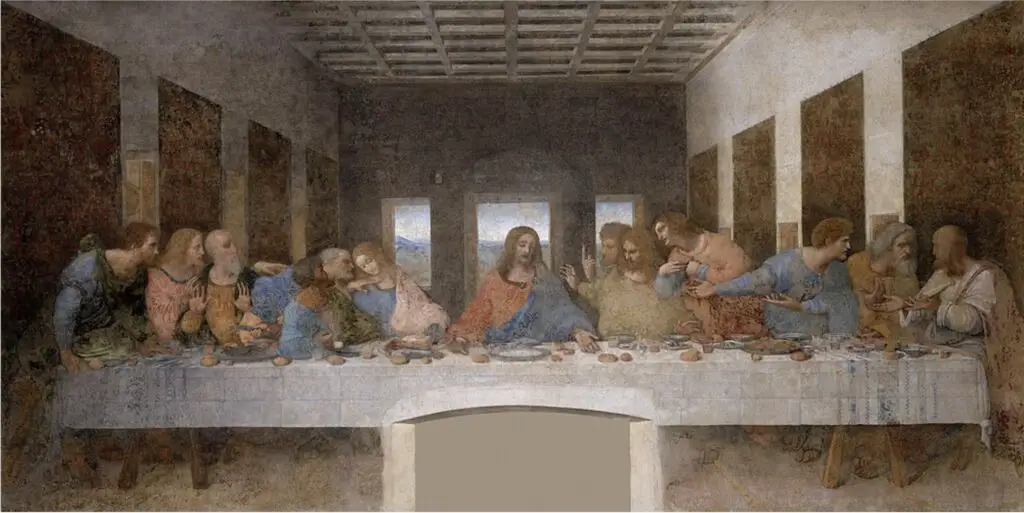
Technological and Cultural Contributions
The High Renaissance, a golden age of art when masters like Leonardo, Raphael, and Michelangelo walked the streets of Italy and filled its churches and palaces with beauty, left an indelible mark not just on canvas or in marble but on the fabric of society itself.
Beyond creating masterpieces, High Renaissance artists fundamentally influenced their time’s cultural and intellectual life. They were seen as more than craftsmen: philosophers, scientists, and polymaths. Their curiosity about the world transformed how people thought about and engaged with various disciplines.
Their realistic depictions of the human form and the natural world were pivotal in advancing human anatomy and botanical sciences. Artists like Leonardo, with an eye for detail bordering on the obsessive, dissected human corpses to understand muscle and bone structure better. This thirst for knowledge contributed to medical textbooks and provided a deeper appreciation for the human body, details that infiltrated paintings and sculptures, elevating them to unparalleled realism.
Moreover, artists of the High Renaissance were essential in evolving the role of portraiture from mere representation to an exploration of character and status—a reflection of an individual’s place in society. Capturing nuances of facial expressions and gestures allowed art to communicate personal and political messages, making a significant non-verbal impact on public discourse.
Beyond portraying individuals, these artists were also instrumental in redefining spatial representation through the mastery of perspective. Architects and urban planners drew on the principles demonstrated in High Renaissance paintings to develop more sophisticated methods for designing buildings and public spaces. This helped bridge the gap between art and architecture, intertwining the two disciplines as never before.
High Renaissance art was also tied to the political arena. It was often commissioned by influential figures who used monumental artwork to assert dominance or align themselves with divine favor. The grandeur and majesty embodied in art pieces were parallel to the power structures of the time, and they often served as tools for propaganda or religious endorsement.
Furthermore, High Renaissance artists indirectly affected education. Their quest for realism and scientific accuracy fed into teaching methodologies, promoting observational skills and critical thinking. They helped lay the foundation for a more enlightened society, placing a higher value on learning and intellectual inquiry.
Lastly, the High Renaissance witnessed women artists like Sofonisba Anguissola break into the male-dominated art world, broadening the perspectives and contributions within the artist community. Their presence paved the way for future generations of female artists to find their voices and influence the course of art history.
The ripples caused by High Renaissance artists extended beyond the borders of their canvases, influencing education, science, politics, and gender roles. Their legacy is not confined to the past but continues to illuminate the path for the arts and society.
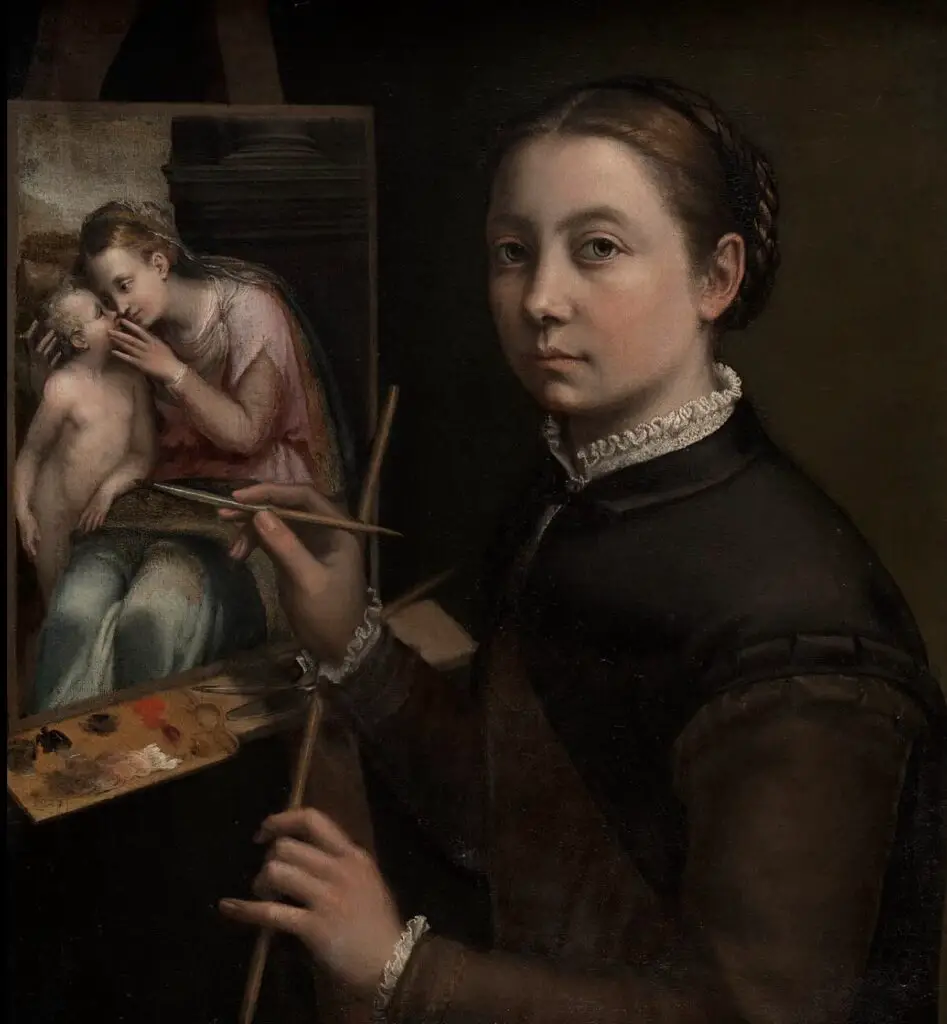
High Renaissance Beyond Italy
As the High Renaissance blossomed in Italy, its tendrils reached across the European continent, leaving an imprint that would shape the future of art. This remarkable period was not confined within Italian borders; it became a pan-European phenomenon, bridging cultural divides and seeding an enduring artistic revolution. The migration and evolution of this movement outside Italy is as fascinating a journey as the grand masterpieces it produced.
The exchange of ideas wasn’t one-directional; it was a dialogue that enriched both sides. The Northern artists brought a mastery of oil painting and a keen eye for detailed landscapes—traits that mingled with the Italian emphasis on compositional harmony and human anatomy. Hans Holbein the Younger, another German artist but one who spent much of his time in England, exemplified this synthesis. His portraits combined an extraordinary realism with a psychological depth that could rival the canvases of Leonardo or Raphael.
In France, the influence of the High Renaissance arrived through the likes of Rosso Fiorentino and Francesco Primaticcio, who were summoned to the French court to work on the grandiose Château de Fontainebleau. They created an elegant blend of Italianate forms and French style, which later evolved into the distinct School of Fontainebleau. This artistic dialogue continued with ambassadors of culture such as Benvenuto Cellini, whose stay in France deepened the exchange.
Spain likewise experienced an influx of Renaissance ideas as Italian artists, including Titian, were patronized by the Habsburg monarchs. King Philip II’s El Escorial complex was heavily influenced by the principles of Renaissance architecture and served as a bastion of this style in Spain. Meanwhile, although he started his career in Crete, Spanish artists like El Greco ventured to Venice and Rome before settling in Toledo. While rooted in the High Renaissance, his works began to contort into distinctive shapes that heralded a new visionary art form.
In the Netherlands, artists like Pieter Bruegel the Elder adapted the Italian influences to domestic tastes, portraying scenes of peasant life endowed with the sense of proportion and anatomical precision learned from Renaissance giants but imbued with a distinctly Northern sensibility.
As these works proliferated, they weren’t mere replicas of Italian originals; they were reborn through the lens of each unique cultural context. The ideals of balance, harmony, and realism took on new inflections as they merged with local customs, materials, and artistic traditions.
Furthermore, the proliferation of printmaking advanced by artists like Dürer played a pivotal role in disseminating High Renaissance styles across Europe. Engravings and woodcuts circulated widely, providing a visual resource for artists far from Italy’s sunny skies.
The spread of the High Renaissance across Europe was not a mere transfer of stylistic approaches; it was an organic process of assimilation and transformation. These artists served as catalysts and sponges, absorbing the Italian Renaissance’s grandeur and refracting it through their cultural prisms.
And so, as the High Renaissance sun set in Italy, it rose in different parts of Europe, illuminating new landscapes with the splendor of humanist and artistic ideals. Its legacy would continue to shape European art for centuries, testifying to the power of cultural cross-pollination and the universal language of art. The Renaissance was no longer Italian, nor was it solely a particular moment in history. It had become a weave in the fabric of European culture, an enduring testament to the transformative power of art.
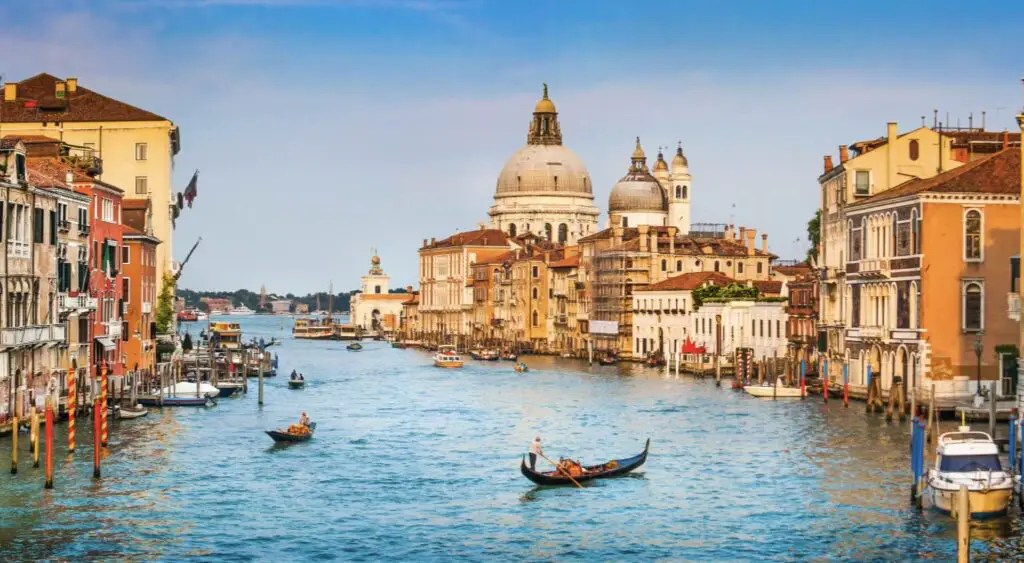
Traversing the majestic arc of the High Renaissance brings us face to face with the remarkable convergence of art, science, and human potential. A coherent picture emerges as we step back from our exploration of its illustrious artists, the awe-inspiring artworks they bequeathed to posterity, and the enduring impact they had across continents.
It is one in which the ethos of the era, characterized by a pursuit of excellence and an unbridled commitment to both the aesthetic and intellectual domains, continues to resonate through the ages. The lasting legacy of the High Renaissance reverberates in contemporary art and culture, providing an inexhaustible source of inspiration and a touchstone for understanding the evolution of artistic endeavors. It is a testament to the transcendent power of human creativity and its capacity to shape, reflect, and elevate the human experience.
Anita Louise Art is dedicated to art education, great artists, and inspiring others to find and create their art. We love art that uplifts and inspires. #ArtToMakeYouSmile! #ArtToMakeYouHappy!
If you want to see any of my art, you can find out more by clicking here. If you are interested in what inspires me and my paintings, you can discover more by clicking here.
We have a free newsletter and would love you to be part of our community; you can subscribe to the newsletter by clicking here. If you have any questions, I would be happy to talk to you anytime. You can reach me, Anita, by clicking here.
Subscribe to our Anita Louise Art YouTube Channel with great videos and information by clicking here.
Join us for our podcast “5 Minutes With Art.” just 5 minutes a week with us to discover and learn about great art and artists. You can find out more about our podcast by clicking here.
Related Artwork
Behind The Veil, By Anita Louise Hummel
Behind the Veil, by Anita Louise Hummel, is a painting that is a tribute to women wearing a veil or a burka. There is something mysterious and beautiful about a woman who wears a veil, especially when the woman has nicely manicured nails, golden jewels, and piercing blue eyes. Behind The Veil shows that beauty is more than just appearances and is under the skin; beauty can shine through a woman’s veil.
By clicking here, you can learn more by reading Behind The Veil, By Anita Louise Hummel.
Resurrecting Hope: Lifting Others With Love By Anita Louise Hummel
This work is her entry in the 13th International Art Competition of The Church of Jesus Christ of Latter-day Saints. The competition, themed “Lift Up the Hands Which Hang Down,” is inspired by the scripture from Doctrine and Covenants 81:5: “Wherefore, be faithful; stand in the office which I have appointed unto you; succor the weak, lift up the hands which hang down, and strengthen the feeble knees.” Hummel’s choice of ceramics marks a significant shift in her artistic journey, embracing a new medium to express a powerful message of hope and charity.
You can discover more by reading Resurrecting Hope: Lifting Others With Love By Anita Louise Hummel by clicking here.
The Selfie, By Anita Louise Hummel – Even Dogs Can Take Selfies
The Selfie is an original oil painting by Anita Louise Hummel. This oil painting is medium to bright oil paints of a dog holding his phone and showing us the selfie he has just taken. The painting is, in part, asking the question, “if our dogs could take a selfie, what kind of selfie would they take?”
Discover more by reading The Selfie, By Anita Louise Hummel – Even Dogs Can Take Selfies by clicking here.

